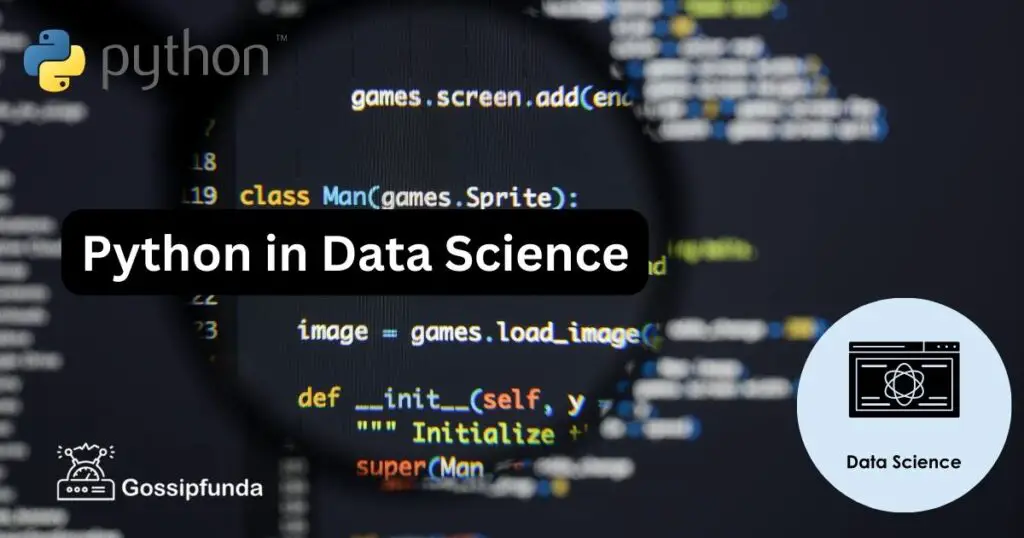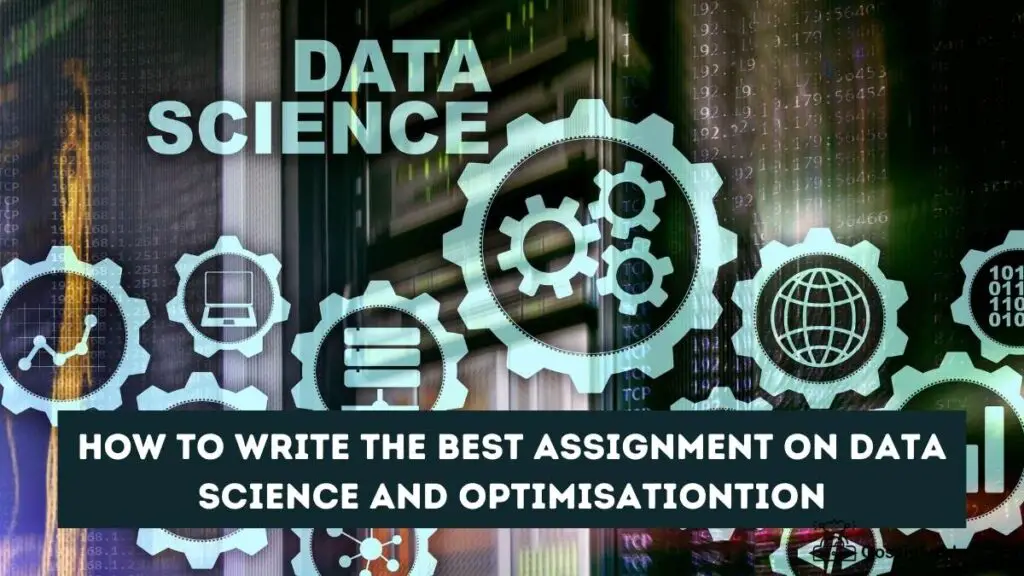Python is a popular programming language that is used by both developers and data scientists. But what makes this language so popular? Why is it that almost every data scientist is choosing Python over every other programming language? Let’s understand.
Data Science and Python often go hand-in-hand. If you are an aspiring data scientist, then there is no dearth of data science courses that you can apply for! These courses will teach you about working with various programming languages like Python, JAVA, C++, etc.
In this article, we will be talking about the advantages of Python in Data Science. Moreover, we will also be discovering some interesting facts regarding the same. So, make sure you read the article till the end.

What is Python?
Python is a general-purpose programming and object-oriented language. It is a high-level language that includes structural and functional programming paradigms.
Python came into being in the 1980s. Over the years, Python has undergone many shifts and changes. Python is primarily designed to fix issues in the structure of various websites and web pages. It is a compatible language that is widely used by everyone.
Python has six types of sequences. They are:
- Strings
Strings are defined as a group of characters written in single/ double quotes. Python does not have any character type. Thus, a single character can also be considered a string.
- Lists
Python lists are the same as arrays. They allow developers and data scientists to create a heterogeneous collection of items in a list. The list might include numbers, strings, tuples, objects, dictionaries, etc.
- Tuples
Tuples are the sequence of Python Objects. A tuple is made by separating the items with a ‘comma’. It can be optionally put into the parenthesis as well.
- Byte Sequences
The byte() function in Python is used to return the immutable byte sequence. Interestingly, the sequences returned cannot be modified.
- Byte Arrays
Byte arrays are somewhat similar to byte sequences. The only difference between them is that the arrays are mutable and byte sequences are immutable. Also, the byte objects are returned similarly as they are sent in the arrays.
- Range Objects
The range is an in-built function in Python. The range object is just a sequence of integers that generates in a separate start and stop range.
What is Data Science?
Data science is a field of study that comprises vast volumes of data using modern tools and techniques. Data scientists are one of the integral parts of many companies because they help in finding unseen patterns and derive meaningful information from them. Data scientists also make decisions based on patterns.
Here are other roles and responsibilities of a Data Scientist:
- Discovering the latest trends and patterns in datasets in order to get deep insights and information.
- Creating algorithms and data models.
- Improving the quality of products and services offered by using machine learning techniques.
- Making use of tools such as SAAS, Python, SQL, etc.
- Working towards new data science innovations.
What is Python in Data Science?
Python is a very simple language used by data scientists. Many data scientists might be knowing some programming languages but there is nothing like Python. Thus, it is a widely used and recognized language.
It is interesting to note that many data scientists are from mathematics and statistics backgrounds. They may not have any prior coding experience. In such situations, Python is a great language, to begin with, because the syntax is quite simple. It is very simple to follow, write, and understand the language.
In addition to this, there are plenty of free resources available from where you can learn the language. There are many data science courses as well that will make it easy to comprehend the interconnection of Data Science and Python. The courses will be beneficial for developers as well as data scientists who wish to start learning Python.
Another point to note here is that there is a large community of Python. Nearly every data scientist knows how to use Python in their everyday tasks. Thus, new data scientists can learn from experienced data scientists about how they can incorporate Python while working.
Now, there are countless libraries available in Python that undertake the process of data visualization, data cleaning, machine learning, etc. While working with Python, Data Scientists can make use of these libraries to make tasks simpler. Below is a list of some popular libraries in Python.
- NumPy
It is a Python library that offers support in tasks associated with mathematics in huge and multidimensional arrays.
- Pandas
Pandas is an easy-to-use and widely acknowledged library. It is used for easy manipulation of data for processes like data analysis and data cleaning.
- Matplotlib
This library offers simple ways for the data scientist to assist in the creation of scatterplots, boxplots, pie charts, bar graphs, etc. This particular library is primarily used for making data visualization tasks simpler.
- Seaborn
Seaborn is a data visualization library that allows data scientists to create dynamic and visually appealing graphs.
- Statsmodels
As the name suggests, Statsmodels is a statistical modeling library that helps in undertaking statistical tests and creating statistical models. This library also includes generalized linear models, analysis models, linear regression, etc.
- Scipy
This library is used for computing in medium and large-scale industries. This library helps data scientists with linear algebra, statistical work, and optimization.
- Requests
Requests is another useful library for scraping data from web pages. This library offers a responsive and user-friendly way to configure HTTPS requests.
One of the major advantages of Python in Data Science is the availability of libraries. The libraries mentioned above help primarily in managing the work of data scientists. These libraries are also capable of building powerful and accurate networks to enhance performance and speed in the workplace.
Now that we have discussed the libraries, let us see how we can learn Python for Data Science.
Learning Python for Data Science
Python is one of the primary choices of Data Scientists. It is a widely used language whose popularity has grown throughout the years. Here is a step-by-step procedure for learning and incorporating Python into everyday tasks!
- Learning the Basics
As a Data Scientist, one has to begin by learning the fundamentals of Python. To know the basics, one can apply for data science courses, wherein they can learn all about Python and Data Science.
- Hands-on Learning
The next step is to have hands-on learning by engaging in Python projects. By working on projects, one can have an in-depth understanding of how Python can be utilized effectively. For instance, one can work on creating various games like rock, paper, scissors, guessing games, text adventure games, and much more!
- Be aware of Python Libraries
It is essential to have a thorough knowledge of Python Libraries. We have already discussed the libraries in detail in the above section. If we are to pick the top libraries, then NumPy and Pandas are great for exploring data and further playing with it. You can begin with these two Python libraries to carry out the work!
- Building the Data Science Portfolio
For beginners and aspiring Data Scientists, a portfolio is a necessity. It is an integral part of every Data Scientist’s career. Here are the top projects to make your portfolio better:
- Data Cleaning Project
This project includes cleaning up the data and analyzing it.
- Data Visualization Project
In this project, you have to make attractive, dynamic, and easy-to-read visualizations. Creative and informational charts will make your portfolio stand out.
- Machine Learning Project
If you aspire to become a Data Scientist, then a machine learning project is a must. The project will help you represent your machine learning skills alongside working on different algorithms.
- Apply Data Science Techniques
The final step is to improve your skills and become a successful data scientist. Make sure you have covered all the fundamentals of Python and Data Science. You can also step into machine learning by indulging in the creation of networks and business models.
In order to learn Python, it is essential to follow these steps. After acquiring proper knowledge of Python in Data Science, one can definitely become a successful Data Scientist.
Now that we have discussed how to incorporate Python in Data Science, let us look at how we can install libraries.
How to Install a Python library?
Assuming that you have already installed Python on the computer, this section is all about installing libraries in Python. Here we will be guiding you to install NumPy. Follow the steps mentioned below!
- Step I
Press ‘Start’ and type ‘cmd’. Then, right-click the result and select ‘run as administrator.’
- Step II
The next step is to install the library from PyPi. You will be needing PIP for this. Install PIP and move on to the next step.
- Step III
Type ‘pip install numpy’ and press ‘enter’ to run the code. This process will install NumPy successfully on your computers. Now, you can import this library and start working.
Conclusion
As Python continues to grow in popularity, many data scientists are taking up this language to manage work and everyday tasks. Python has been well-maintained and updated over the years and is used by every company today.
If you are an aspiring data scientist or an experienced one, you can benefit from learning Python. The simplicity, reliability, readability, and support of this language are what make it widely acknowledged and popular. Also, if you are thinking about where to start, then applying to data science coursesmust be the first step in the right direction! These courses will help you have a deep understanding of techniques, concepts, and tools of data science.
Alongside you will also learn various programming languages that will help you become a successful data scientist. Thus, apply today for such courses and commence your data science journey!
My self Jean Acker, an SEO specialist. MS from the reputed college MIT. I am an innovative person, as well as have a sound interface with tech. Honestly, I easily supervise my meditations as well as my experimentation with Android and iOS.


